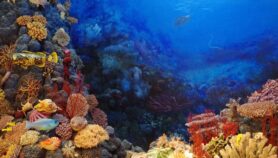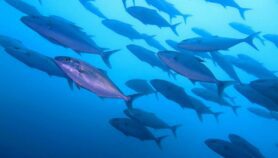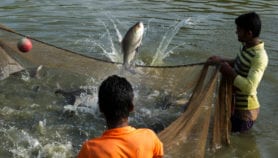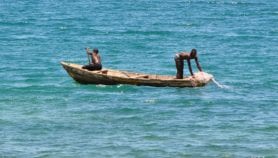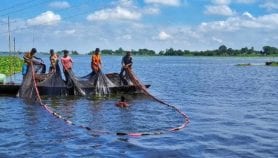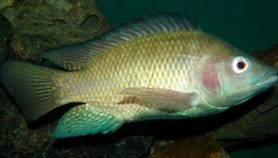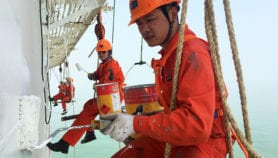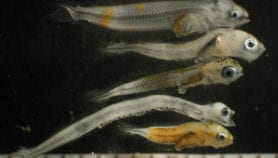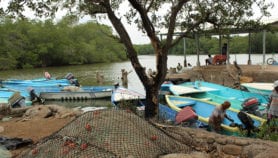22/06/20
Coastal fishing communities ‘facing disaster’
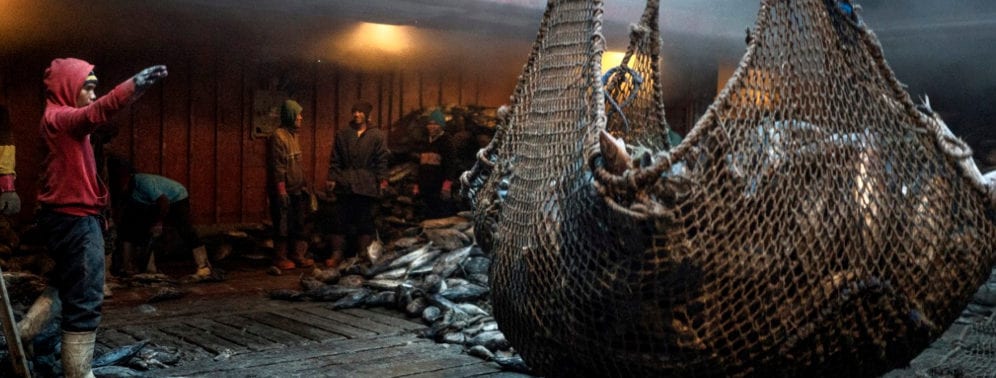
By: Claudia Mazzeo
Send to a friend
The details you provide on this page will not be used to send unsolicited email, and will not be sold to a 3rd party. See privacy policy.
Industrialised countries’ distant-water fishing fleets are plundering the fish stocks of low-income countries, with China’s fleet much larger than previously thought, a new study reveals.
While overfishing is a global issue, the Overseas Development Institute (ODI) says that “the sheer size and global presence” of China’s distant-water fleet means it is the most significant actor in the fisheries crisis.
Globally, 90 per cent of commercially-exploited marine fish stocks are either overfished or fished to their maximum sustainable limits, Food and Agriculture Organization data shows. Nearly 80 per cent of industrial fishing in the national waters of low-income countries is reportedly carried out by vessels flagged to higher-income countries.
“Any excessive exploitation in areas close to our exclusive economic zone has an economic and ecosystem impact on our fishing interests.”
Pablo Filippo, natural resources law specialist, University of Buenos Aires
Using big data analysis, ensemble algorithms and geographic information systems, the ODI found that China’s distant-water fishing fleet was between five and eight times larger than previous estimates, with about 17,000 identified vessels – 12,490 of them observed outside Chinese waters.
Distant-water fishing vessels are those operating within the exclusive economic zone of another country, or on the high seas. Trawlers, associated with long-term damage to ecosystems, were found to be the most common distant fishing vessel.
Fish stock crash
“Disaster looms for fishing communities in developing countries unless politicians at local and international levels listen to scientific research and the facts,” Miren Gutiérrez, a research associate at the ODI, tells SciDev.Net.
“Millions of people depend on the protein from fish and whole economies rely on this activity for jobs and wellbeing. If we don’t find a collective solution, it will eventually be a complete disaster for the Chinese fleet too.
Chinese fishing vessels are often seen in international waters surrounding Argentina’s exclusive economic zone, says Pablo Filippo, a specialist in natural resources law from the University of Buenos Aires, who was not involved in the study.
“Although they fish in the high seas, where there is freedom of fishing and it is not regulated, they take resources that are migratory – common hake and squid, for example – and any excessive exploitation in areas close to our exclusive economic zone has an economic and ecosystem impact on our fishing interests,” he adds.
“This represents a serious problem for several developing countries that have operational limitations to control fishing in their maritime spaces or in areas adjacent to their exclusive economic zones.”
Transparency
ODI investigators say that the ownership and operational control of the Chinese fishing fleet is “complex and opaque”.
“From the analysis of a sub-sample of 6122 vessels, we found that only eight companies own or operate more than 50 vessels each. Most of the ships are owned by small and medium enterprises, many of them are subsidiaries of large corporations for tax purposes,” Gutiérrez says.
Improving transparency is the most cost-effective means to identify illegal, unreported and unregulated (IUU) fishery activities, says Antonia Leroy, WWF Europe head of ocean policy, on behalf of the EU IUU Coalition.*
Leroy tells SciDev.Net that electronic systems monitoring global imports, with traceability in supply chains, could impact illegal fishing and enable customs agencies and retailers to ensure that fish entering their markets has been caught legally and sustainably.
International law
Javier Villanueva, from the fisheries and aquaculture department at the FAO Latin America and Caribbean office, tells SciDev.Net that a major challenge remains “the adoption and effective implementation of international instruments, so that the international community can work together to ensure the sustainable management of fisheries resources and conserve marine biodiversity”.
Among these instruments, Villanueva says that the Agreement on Port State Measures (PSMA) provides Latin American countries an opportunity to jointly curb IUU fishing. The agreement targets IUU fishing by preventing vessels from using ports in an effort to block illegal products from reaching markets.The Chinese fleet most frequently operates in the Northwest Pacific, with a significant impact on Vietnam, the Philippines and Cambodia, the ODI found. The most intense activities are in squid fisheries in the Southwest Atlantic and Southeast Pacific, especially coastal Peru.
An estimated 20 per cent of the global IUU catch comes from Mauritania, Senegal, The Gambia, Guinea-Bissau, Guinea and Sierra Leone.
This piece was produced by SciDev.Net’s Latin America & Caribbean desk.
*This piece was amended on 01 July 2020. The article incorrectly attributed Leroy’s comments to Coalition colleague Sophia Scherer.




